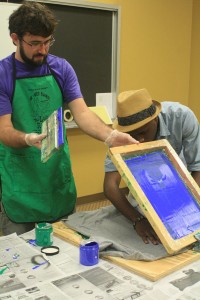100 Lenses
- August 6th, 2012
- in NOSC 2012 Glances

By Kirsten J. Barnes
CCBP Graduate Assistant
Editor's note: UA graduate student Elliot Knight and community partner Kristen Law will be among the more than 250 researchers presenting their findings at NOSC 2012, September 30"“October 3 at The University of Alabama. Knight will be presenting as a student, Law as a community partner.
Elliot Knight grew up in Opelika, Ala., more than 100 miles from the heart of Alabama's Black Belt, the area where he has concentrated his doctoral research. Already a budding photographer when he entered the University, he immediately began using his craft to capture campus life, envisioning ways to get others involved in this most expressive and reflective experience.
Thus, Black Belt 100 Lenses was born. All he needed was a partner. That came when the Black Belt Community Foundation joined forces with the Center for Community-Based Partnerships, where Knight was a graduate assistant.
The program reaches out to high school students who live in rural Alabama to equip them with both cameras and the knowledge to use them. Students learn to become independent community storytellers in words and pictures, and in the process they learn the skills of community leadership, leadership that will result in stronger, more equitable communities.
"This research has given me a much better understanding of the processes and contexts that lead to students feeling more creative and confident," said Knight as he nears completion of his doctorate in interdisciplinary studies, with 100 Lenses the focus of his dissertation.
Knight has seen students become more engaged in their communities and take on leadership roles in their schools and communities. With assistance from CCBP and the Black Belt Community Foundation, this program has helped hundreds of youth develop their leadership and communication abilities.
"This research allowed me to conceptualize, design and implement future programs and creative learning environments that meet students' creative, leadership and educational goals," Knight said.
The title of Knight's presentation is "100 Lenses: How Arts-Based Youth Partnerships Transform Students’ Lives. The title of Law's presentation is "Creative Philanthropy: Engaging Rural Youth Through Black Belt 100 Lenses."